Getting my fingers burned
Sooner or later, I'm going to have to get back to the 'ol soldering iron:
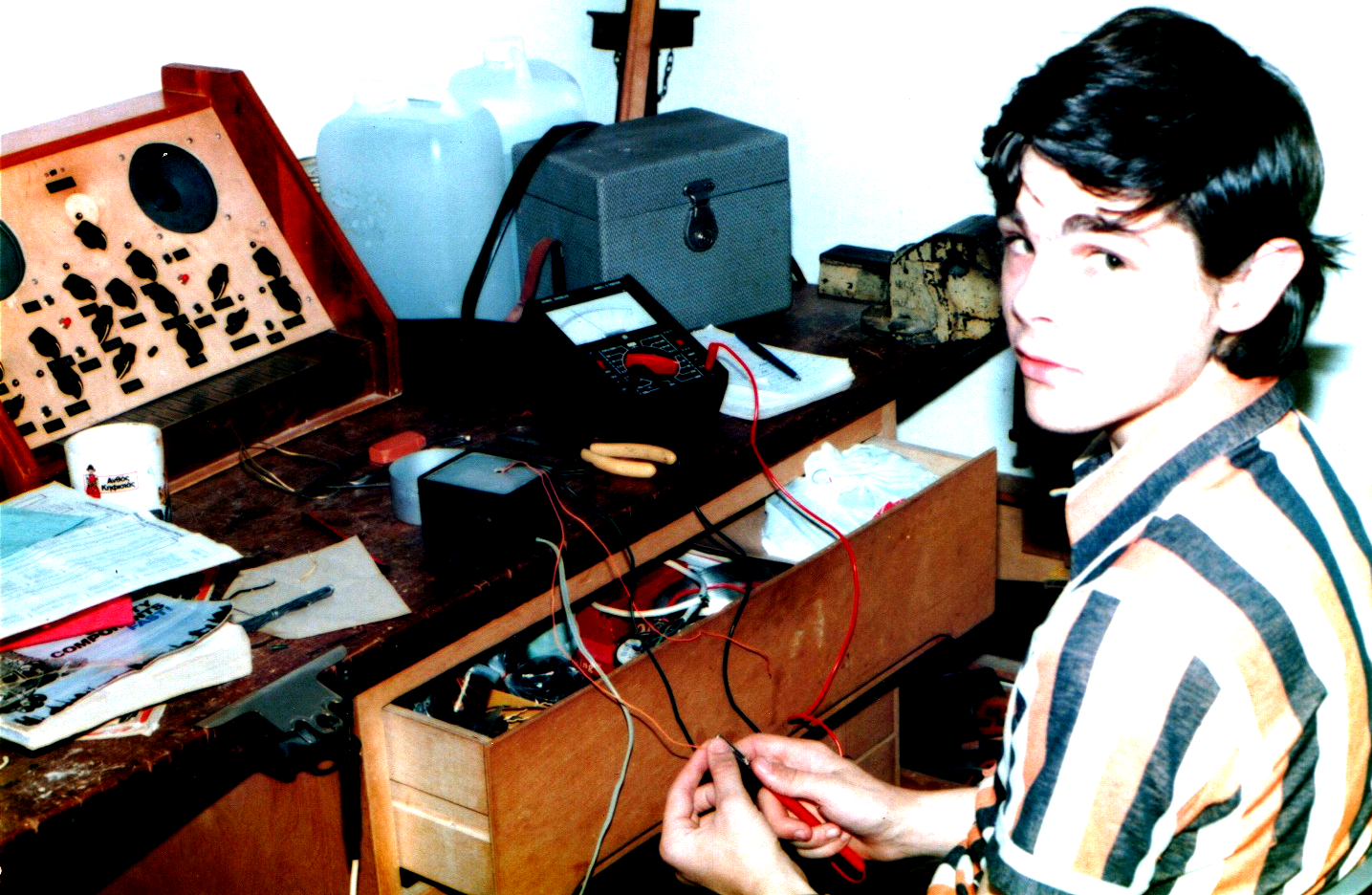
I have a plan: to reconstruct the PE Minisonic you can see above, that I made while I was in school. I still have some of the boards…
Sooner or later, I'm going to have to get back to the 'ol soldering iron:

I have a plan: to reconstruct the PE Minisonic you can see above, that I made while I was in school. I still have some of the boards…
Very happy today. Been working on some electronics for the show. For me as a creator, this is a big part of what Why Scotland, Why East Kilbride is about: exploring my nostalgia for teenage evenings spent with a soldering iron, a cup of coffee, and a Hawkwind album.
Some pics below: trying to get my SN76477 prototyping station back up and running.
[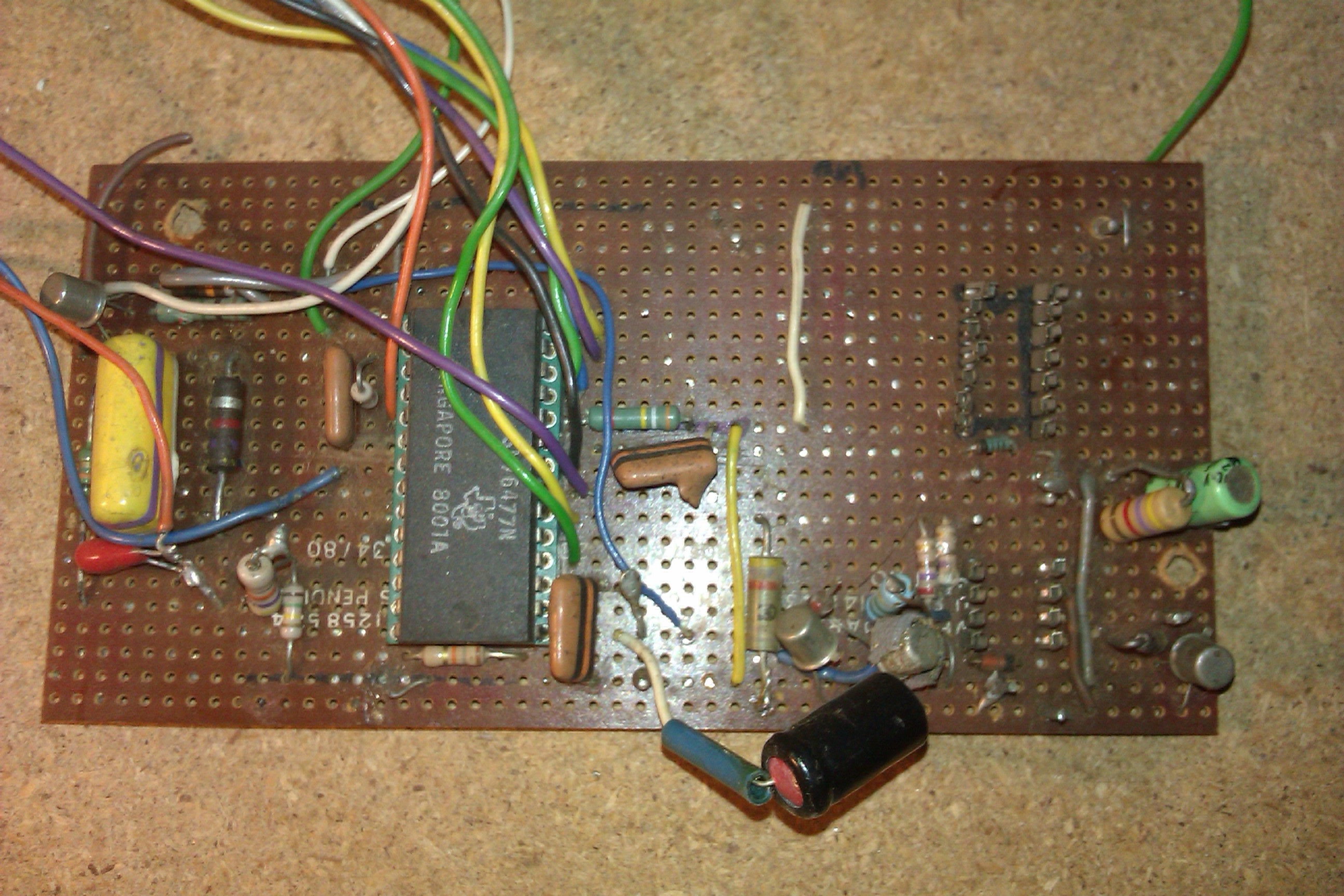
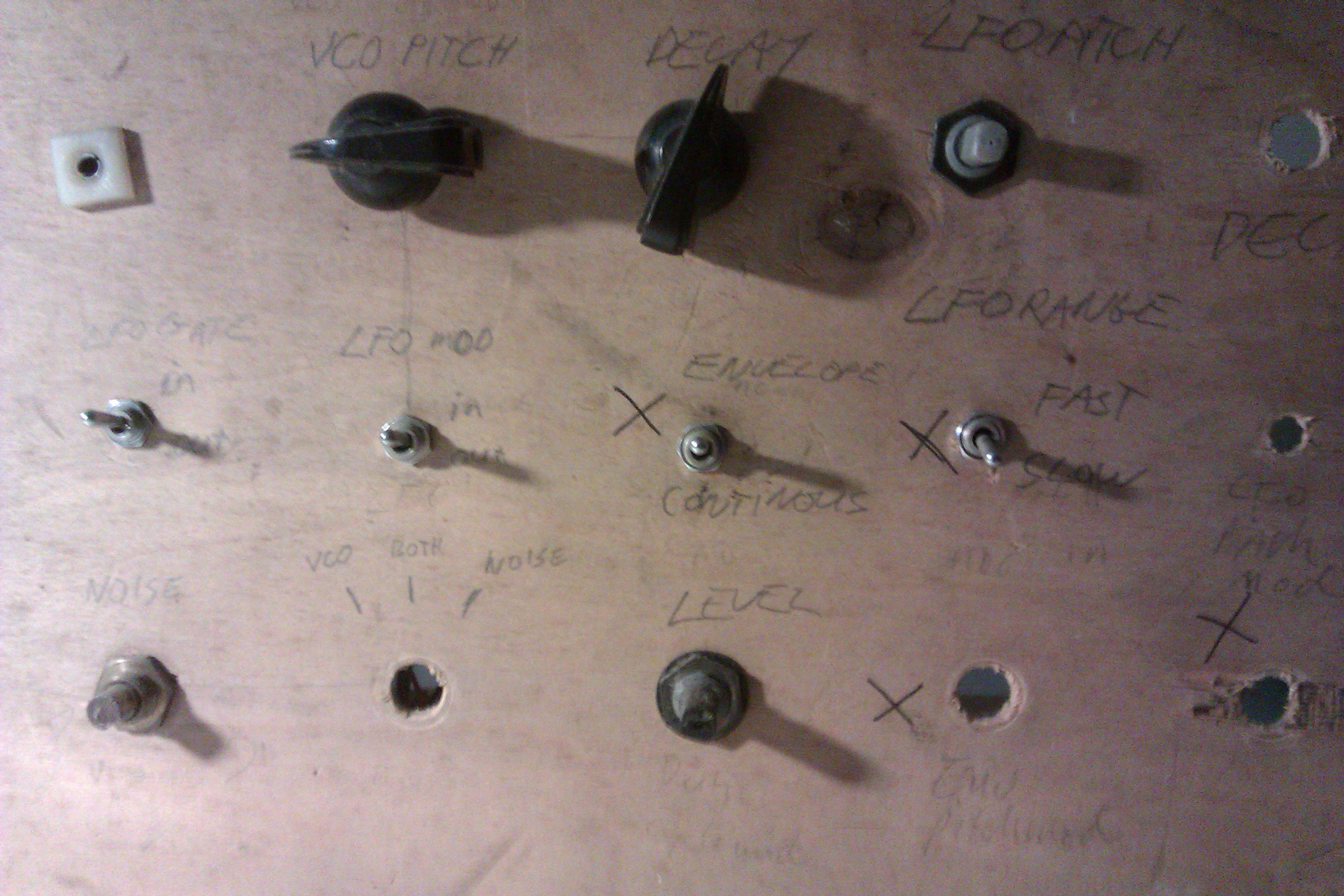
Rather cool to be sharing the bill with 'Six Pianos' tomorrow night. Call me a boring old minimalist, but I still love that piece.
Here's the lineup:
Multiple Piano Extravaganza 7.30pm Stevenson Hall, Royal Conservatoire of Scotland £9.50/£6.50
Steve Reich Six pianos Jonathan Plowright, Alina Horvath, Maraike Breuning, Monika Palsauskaite, Catherine Clark, Donal McHugh
Vera Stanojevic Droplets of Dew for 4 pianos and electronics (World Premiere) Sinae Lee, Graeme McNaught, Fali Pavri and Aaron Shorr
Free improvisations for multiple pianos, electronics and voice Anto Pett, Anne Liis Poll, Alistair MacDonald and Aaron Shorr
J Simon van der Walt RITE for Four Pianos and Electronics (World Premiere) Sinae Lee, Fionnuala Ward, Beth Jerem, Marlon Bordas Gonzalez
Not be much to listen to, maybe, but feels an important moment for me: a new direction after finishing the PhD, satisfyingly far away from score-based contemporary 'classical' nonpop, or whatever you call all that stuff. Next up: more of this kind of thing, plus more gamelan. Happy days.
I've just got a new toy (tx John!). It's a Cheetah MQ8 midi sequencer. This is UK made, apparently released sometime in the late 80s as a competitor to the Alesis MMT-8. I've only just started to figure it out: pretty crazy trying to do everything with a combination of button presses and a tiny, dim LCD screen!
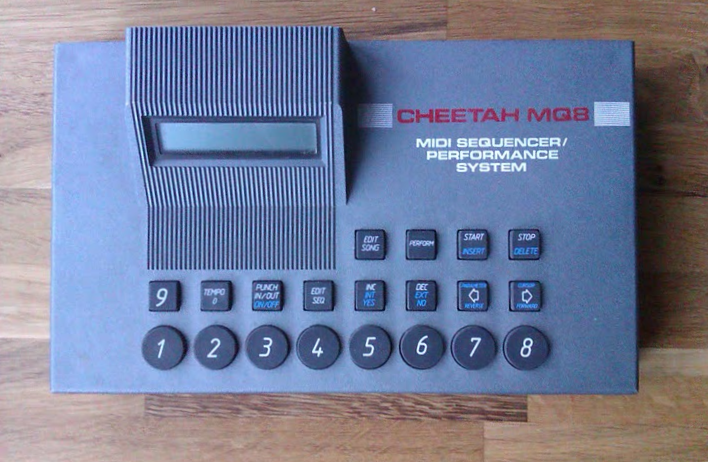
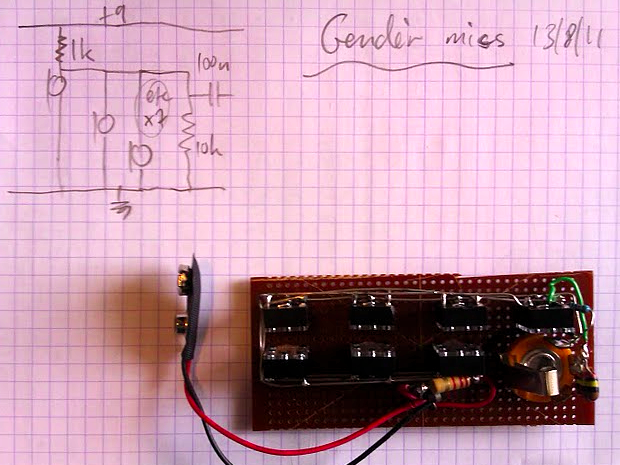
The gendèr miking strategy just got simpler again. After some experimentation, it turned out I was getting better results by just whacking all seven mikes in parallel and 'mixing' them with a single 10k resistor. Loads of cross talk, but for this setup it doesn't really matter. The virtual-earth op-amp design wasn't working out, trying to make it run from a single 9v battery was giving me headaches. This is sounding pretty good, perhaps a bit too much percussive thump at the start of the note: need to find a different way of mounting the mikes, at the moment they are just blu-tacked to the casing.
'trip points one-shot cap' is (yet another) piece inspired by ripped off from alluding to Louis Andriessen's gritty post-minimalist classic 'Hoketus'.
There are two main building blocks. The first is… I was rummaging around in my box of old electronics, and found an optical theremin I'd built years ago. The IC at the heart of this is a bit of a classic, a Texas Instruments SN76477, a very early chip designed to make sounds for toys and games, also great for musical experimentation.
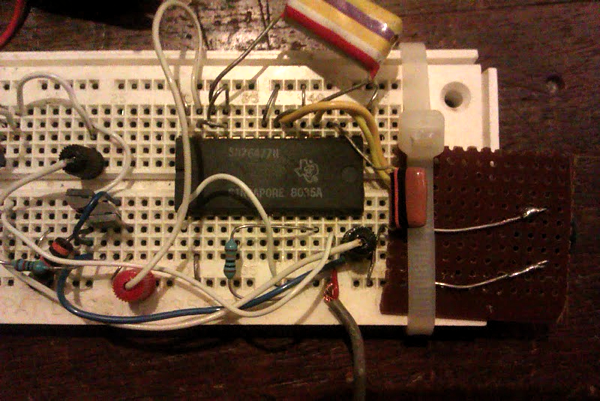
The second part of the track is itself made up of two layers. At the bottom is a two-second slice (ntfot82.aif) of an improvisation made with… well, to tell the truth, I can't remember! An out-of-tune guitar played with a chopstick, I think, but I'm not sure what I was processing it through, might have been hardware, might have been software. This short file was then sliced up and remixed in SuperCollider (code below).
The final track was composed in Logic 9: no added effects there apart from a bit of fake stereo.
//SuperCollider code
s.boot;
p = “/Users/jsimon/Music/tedsound/prosim/nolap_firstofthese/slices/ntfot82.aif”;
b = Buffer.read(s, p);
b = Buffer.read(s, p, bufnum: 0);
b.play; //quick check
b.free; // eventually
(
SynthDef(\mybuf, { |out, bufnum, sig, rate=1, slices=16, slice=16|
var myenv, env, start, len;
len = BufFrames.kr(bufnum);
start = (len / slices * slice);
myenv = Env.linen(0.01, 0.2, 0.1); //attack, sustain, release
sig = PlayBuf.ar(2, bufnum, BufRateScale.kr(bufnum) * rate, startPos: start, loop: 1);
env = EnvGen.kr(myenv, Impulse.kr(0), doneAction: 2);
Out.ar(out, sig * env)
}).add;
)
(
a = Pbind(
\instrument, \mybuf,
\slice, Prand((1 .. 16), inf)
);
)
a.play;
(
b = Pbind(
\instrument, \mybuf,
\slice, Pseq((1 .. 16).scramble, inf)
);
)
b.play;
(
c = Pbind(
\instrument, \mybuf,
\slice, Pseq((1 .. 16).pyramid, inf)
);
)
c.play;
// this is medium fab
// need to get \freq or something in the synth also
// also figger out how buffer number allocation works
// could allocate several buffers and switch between?!?
TempoClock.default.tempo = 160/60;
(
d = Pbind(
\instrument, \mybuf,
\slice, Pseq((1 .. 16).pyramid(9), 1),
// careful pyramid returns all kinds of different length arrays
// 136, 256, 271 seems to be the three possibilities
// (1 .. 16).pyramid(9).size; -> 256
\dur, 0.5
);
)
d.play;
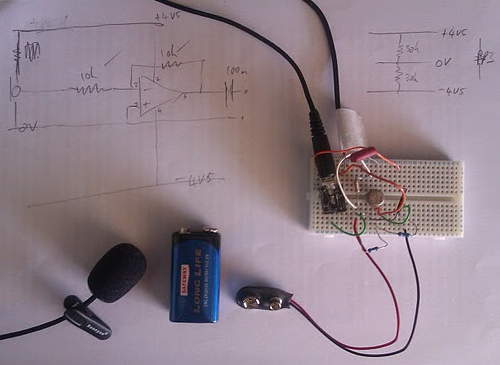
Up to something a bit different today: electronics! Yum. I'm building a simple op-amp virtual earth mixer, which I'm going to use to combine the signal from seven cheapo tie-pin mics, one for each pair of keys. A few false starts today, bit rusty on this, but now have a simple circuit running from a 9v battery, which is producing really a very good sound indeed from a £3 mic. Off to buy six more of them, then…
I was round at Eddie's house the other day, and we had a go at circuit bending an old Yamaha RX17 drum machine;
This is pretty standard stuff, a well-known bend linking pins 4 and 12 of IC 116. After some experimentation, we decided on a 100k log pot with a 1k resistor in series. Ed is a bit iffy about the whole idea of circuit-bending, kind of goes against the grain for someone who was trained in electronic engineering! But we had fun - going to use this in the show on March 5th.
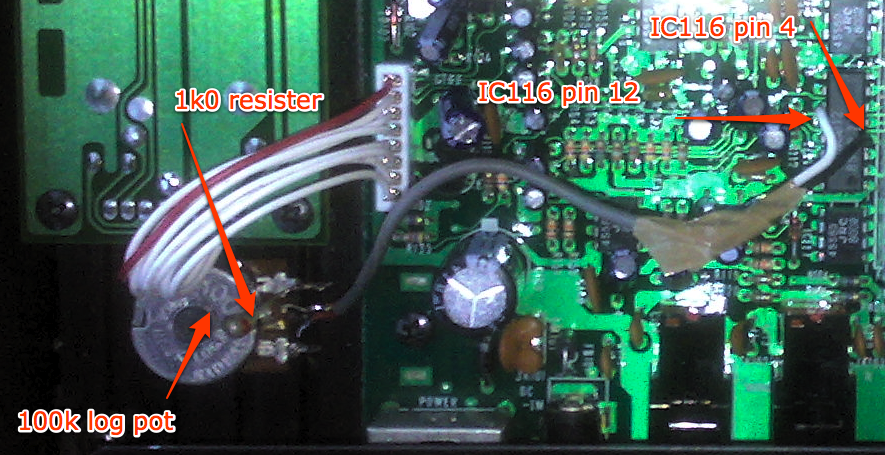
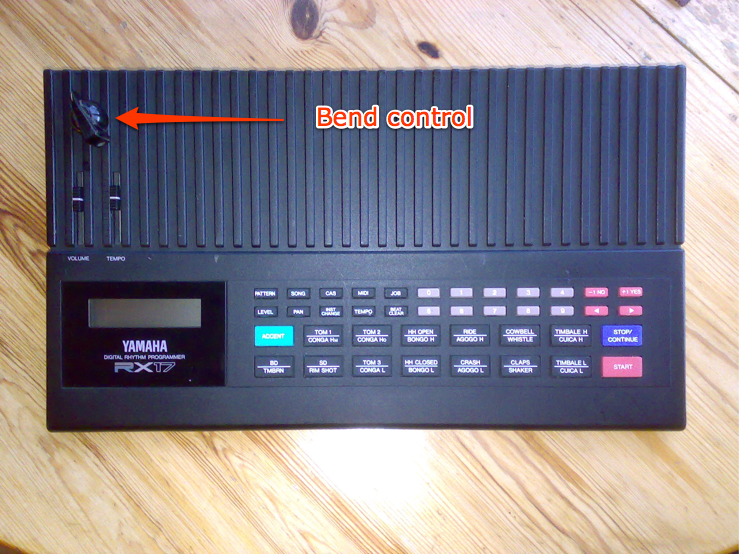
I've finally managed to persuade Ted to let me post some of the amazing back catalog he's built up over the years. Below is a piece called 'slacion' which he did 'sometime in the late 70s', using an adapted version of the PE Minisonic synth plus tape loops plus a spring reverb. The video is also by Ted, a recent digital remix of 'some old Betamax that's up in the loft'. I can't wait to find out what else he has up there…